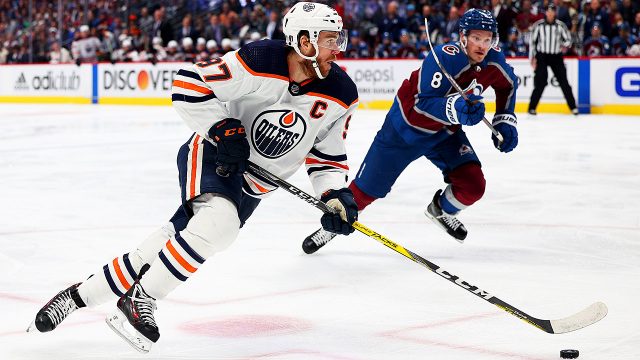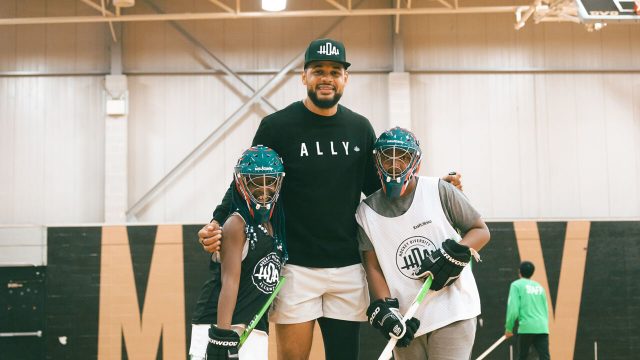
This country has always been a place of dueling stories.
The good ones elbowing for space with the bad ones. The ones we celebrate casting shadows over the ones we hide away. It’s always been a place a little unsure of what it is, full of all of us, each a little unsure of who we are, too.
And so, we look for signs, for hints. And sometimes, out on the field, the court, the ice, under the lights, we find them. In its best moments, sport gives us glimpses of who we might just be. In its triumph and its heartbreak, its striving for something more, it can bring us, if just for a few moments, some common direction to aim for, together. Some identity, wrapped in red-and-white, to cling to, together.
So often, during these past 12 months of tumult, watching from the stands or on our screens, it felt like that. Like we were pulled together, wrapped in red, in the best and worst ways.
It’s impossible to ignore that feeling when a year starts like this one did, with an Olympic flame. With national icons tabbed as flag-bearers, local legends sent across the world to represent us on history’s stage. We went to Beijing, and we did our best. We had our moments.
We had Max Parrot glinting golden first, the pride of Bromont, Que., crowned the slopestyle king just three years after halting his athletic career to battle Hodgkin’s lymphoma. We had Charles Hamelin — the Locomotive de Sainte-Julie — finding his fairytale finish, the veteran’s final run at the Games ending with one last gold, enough to raise him and his medal collection up among our most heralded Olympians.
We had redemption, of the sweetest kind and against the most satisfying opponent. Four years after the Americans left us devastated on the ice in Pyeongchang, the Canadian women reclaimed hockey’s greatest throne.
And leading them there, who else? Marie-Philip Poulin, somehow, still, always, the architect of yet another piece of history, the only player on the planet who collects golden goals like hockey cards. And beside her, Sarah Nurse and Brianne Jenner, rewriting records, making us wonder if we’d ever seen a team look quite so dominant wearing that jersey.
It was only the beginning.
Seven months later, they did it again, Jenner, Poulin and Nurse’s fingerprints all over another run at glory, another world title. The teenagers won, too, Mason McTavish and Kent Johnson authoring their own unforgettable overtime moments in that sweater, leading Team Canada to world junior championship gold.
Off the ice? Out of the arena, with the air in our lungs? We found only more memories.
The men on the pitch made us dream, made us believe. For the first time in nearly four decades, following in the footsteps of Christine Sinclair, they took us to a World Cup, to that field of global icons so long out of reach. We fell short, but we were there. We were on that stage, Alphonso Davies rising up and meeting the moment head-on, making sure they saw us, making sure they remembered. Across the sea, Félix Auger-Aliassime and Denis Shapovalov did the same on the court, ending a century on the sidelines, writing Canada’s name on the Davis Cup for the first time.
We had our moments. More than we could ever reasonably ask sport to give us.
But this has always been a place of dueling stories. And along with our pride in the one, came the shame of the other. Because boiling underneath all of these moments, wrapped in that same red-and-white we raised in triumph, was something rotten.
The details of the Hockey Canada scandal came out slowly. A lawsuit was settled, an allegation made of horrific behaviour from a group of athletes who had given us moments just like all those others, who had made us dream and cheer, whose names we knew we’d recognize.
Still, somehow, it got worse.
The “adults in the room,” the leaders, were pulled out of Hockey Canada boardrooms and put before Parliamentary committees, given the opportunity to walk us all through the details of the fallout; to explain the mechanism by which, surely, the players involved were held to account, made to understand the severity of what they had done.
But, no. Instead, it all unraveled. The mishandled investigation; the millions paid out to settle sexual misconduct cases, funded in part by registration fees paid by parents across the country; the revelation of more incidents, more scandals, from more athletes who wore our sweater.
All this from an organization tasked with putting together sports teams, with running hockey programs, with providing a place for kids to fall in love with a game.
This immense shame, this immeasurable failure, is as much a part of what defines the past year in Canadian sport as anything else. What will define the next one is where we go from here — what we continue to allow, and what we decide we won’t stand for.
For a long time, we’ve seen the cracks in the foundation of this sport. This sport that so often brings new horrors to our doorstep — new stories of sexual violence, of racism, of homophobia, of misogyny. This sport that is so deeply, inextricably wrapped up in who we are, together; but often falls so far from who we tell ourselves we are, together.
But instead of taking care of our house, instead of making the fixes, we stepped around the breaks. We blocked out the noise. We stared out the window and marveled at the view.
In 2022, though, it felt like something shifted. It felt like we were finally collectively moved to ask questions, to demand answers.
As we turn the page, as we start anew in 2023, we must keep asking those questions. We must keep demanding answers, demanding changes, demanding a path forward that leads through these things we’ve uncovered over the past 12 months, not away from them. We must demand solutions, not diversions.
More than anything, though, we must push more fervently, more earnestly, to be the sporting nation we think we are. If we do anything in the year that awaits, after the one drawing to a close, let it be that.






